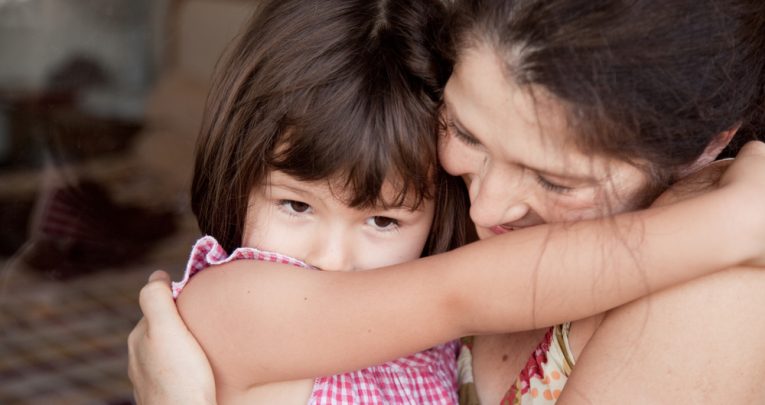Handle With Care – Sensitive Children In Early Years Settings

Sarah Ockwell-Smith describes the outward signs of highly sensitive children, and offers advice on how to meet their needs…

- by Sarah Ockwell-Smith
- Bestselling author and leading expert on gentle parenting Visit website

Sometimes we all feel a little more emotional, crying easily or losing our temper more quickly than usual, but imagine what it would be like to live in this heightened state of emotion every day. This is the world of the ‘highly sensitive’ child – a group than an estimated 15% of all children fall into.
Do you have a baby or toddler in your care who cries more often and perhaps for longer than the other children? Or a child who struggles to leave their parent every morning and finds it hard to cope with different noises, lighting or other children nearby? If so, you may have a highly sensitive child in your care.
Highly sensitive children can show heightened emotional or physical sensitivity, and sometimes both…
Emotional sensitivity
Children with heightened emotional sensitivity may become more upset when being disciplined than others. They may show an unusually mature level of empathy when another child is upset, and in turn may become incredibly unhappy when witnessing another child’s distress.
Emotionally sensitive babies may cry if they are close to another crying baby. Such children can also find it difficult to get over, or let go of things. For instance, they may remain upset for several hours after an incident with another child, or over a toileting accident. They may become distressed when listening to a story with a sad ending.
They will display their emotions much more freely and strongly than usual – particularly sadness, fear, anxiety and empathy. Sometimes these children may display more anger and can be quicker to tantrum (and will do so with more severity). Often they will be harder to calm when they get particularly frustrated.
Hard, but rewarding
Emotionally sensitive children can be hard to work with, but equally incredibly rewarding, as they often show their appreciation of the world far more than others. It’s really important to remember – and to specifically remind parents – that these children are not being naughty, problematic or manipulative; this is just who they are. Focusing on a child as an individual, and realising that this is part of his or her personality rather than a problem that needs ‘fixing,’ is vital.
Sensitive babies and toddlers will remain this way right into adulthood, and as they grow they will develop strategies to deal with their emotions. Emotional sensitivity is, in many ways, a wonderful personality trait – increased empathy can make you a good listener and friend. It’s therefore important to help parents realise that while this behaviour may be harder to cope with at a young age, it may become the thing they are most proud of as their child grows.
It’s particularly important to avoid labelling an emotionally sensitive child. Don’t use ‘cry baby’, ‘clingy’, ‘soppy’, ‘whiny’, ‘big girl’s blouse’ or any other negative terms. It’s vital for everybody involved in these children’s care, particularly parents, to approach sensitivity positively. Instead, use words such as ‘thoughtful’, ‘gentle’, ‘empathic’, ‘tender’ and ‘in touch with their feelings’.
Physical sensitivity
Heightened physical sensitivity can manifest in many ways, affecting one sense, several senses or all five.
Babies and toddlers with highly sensitive sight, for example, can experience difficulties with too much or too little light, especially when it comes to daytime naps. They may find it hard to take everything in and feel visually overwhelmed in an environment with too many colours and patterns.
This can also affect eating. Babies with sensitive sight will often feed much better in a more boring environment, where they can focus all of their attention on their milk rather than what’s going on around them.
A high sensitivity to touch can manifest in a child’s discomfort next to certain fabrics (commonly wool and artificial fibres). Children may also struggle with labels in clothing, wearing disposable nappies, having nappy changes and hand washing, especially if the water used is too hot or too cold for their preference.
Personal space
Another element that comes into play here is a high sensitivity to personal body space. Some toddlers in particular may feel threatened if another child comes too close to them, and will often try to protect themselves by shoving, hitting or, often, biting.
Here, it’s important to help the child concerned to understand that it’s okay to not like other children too close to them – but that it’s not okay to hurt them. If they are verbal, helping them to use phrases such as ‘Too close, stop” or similar can really help. If they are preverbal, understanding their early signs and triggers and pre-empting their reaction is the best plan of action.
Highly touch-sensitive babies may want to be held more, or conversely less, than others. If you have a baby in your care who needs a lot of touch stimulation, finding a good baby sling or carrier to ‘wear’ them for at least part of the day can really help to meet their needs.
Smell and taste
Heightened sensitivity to smell and taste are linked. Sensitive tasters and smellers often present as ‘picky eaters’. Picky eating is common in toddlers, and in many ways it’s normal for all toddlers to be fussy at mealtimes. Young children have many more taste buds than adults, and all food tastes stronger to them.
Scientists have recently discovered the presence of a ‘super-taster’ gene, which heightens the bitterness of food. A supertasting child can display even more pickiness than normal, especially to green vegetables (chlorophyll is particularly bitter). In this instance, the best approach is to be understanding and not to make a fuss.
Instead, offer foods you know the child will eat and allow the eating to be as baby- or child-led as possible. Serving food buffet-style can be far less overwhelming than serving up a plateful.
Last but by no means least, highly sensitive babies and children can struggle hugely with sound. This is the most common of physical sensitivities and is especially prevalent in busy daycare settings. Give children access to a quiet space, or alternatively have some special headphones on hand to muffle noise, particularly at any music times, to prevent too much upset.
Take extra care
10 further ways to help sensitive children…
• Be patient and stay calm yourself • Don’t try to change the child; you won’t be able to make them less sensitive • Try to pre-empt situations that may cause stress • Help toddlers find the words to express their emotions • Listen to the child’s fears as much as possible • See the good in the child, rather than viewing the sensitivity as negative • Help parents to realise it is not their fault, and that their child doesn’t need ‘fixing’ • Create a safe haven, such as a quiet area • Name emotions to help children to recognise them










